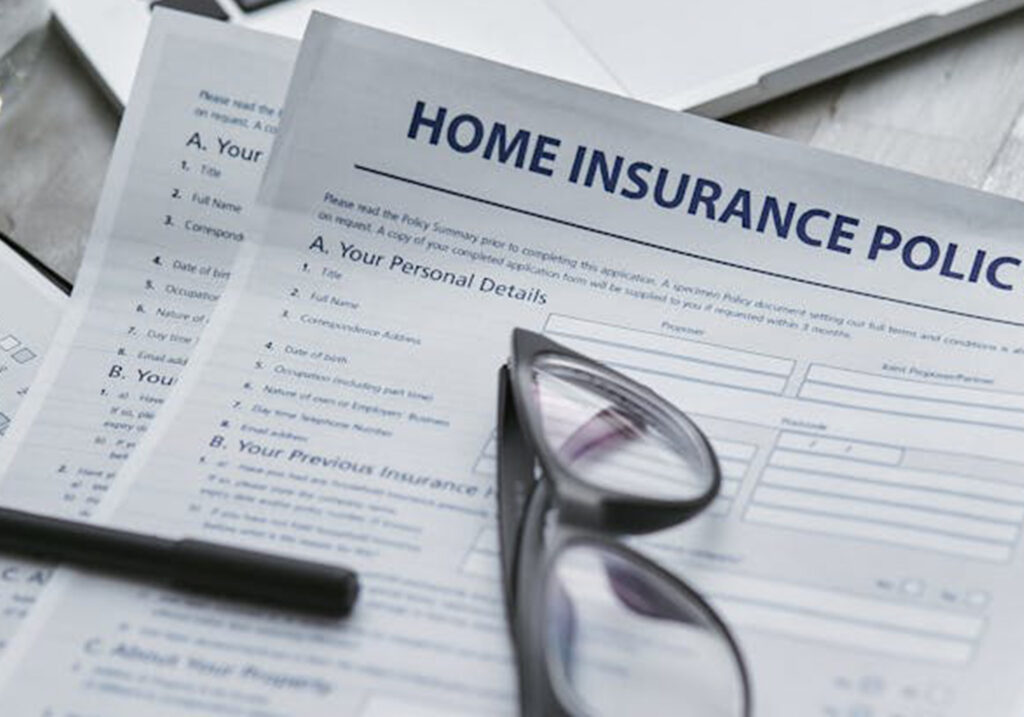Some readers have asked us the question “Is insurance cheaper for metal buildings?” In this article, we will address this question.
In many ways, steel buildings offer many advantages, budget-wise. This involves how much you are going to pay for insurance. For owners of metal buildings, one common question is whether insuring a metal structure is more affordable compared to traditional buildings constructed with wood, brick, or concrete.
Insurance is a critical consideration for any property owner, as it safeguards against financial losses resulting from unforeseen events such as natural disasters, theft, and accidents.
Let us delve into the factors influencing insurance costs for metal buildings, compare them with other construction types, and provide insights into how property owners can optimize their insurance expenses.
Understanding Metal Buildings
Factors Affecting Insurance Costs for Metal Buildings
Metal buildings are structures primarily composed of steel or other metal alloys. They are widely used for commercial, industrial, agricultural, and residential purposes due to their durability, versatility, and cost-effectiveness. Common types of metal buildings include warehouses, storage facilities, manufacturing plants, agricultural barns, and even custom homes. Their adaptability in design and construction makes them suitable for a variety of industries, offering customizable layouts and scalable options to meet specific needs.
One of the most notable advantages of metal buildings is their exceptional strength and resilience. These structures are engineered to withstand significant environmental pressures, including heavy snow, high winds, and seismic activity. This resistance to natural disasters reduces the likelihood of damage, thereby minimizing the risk of costly repairs and insurance claims. As a result, insurers often view metal buildings as lower-risk properties, which can lead to more affordable premiums compared to traditional buildings.
Also, metal buildings have low maintenance requirements, making them an appealing choice for property owners seeking long-term cost savings. Steel structures are not susceptible to rot, mold, or pest infestations, which are common issues in wood-framed buildings. This reduced vulnerability to common maintenance problems further lowers the potential for insurance claims, contributing to lower insurance costs over the building’s lifespan.
Moreover, the non-combustible nature of steel enhances the fire resistance of metal buildings. Unlike wood structures, which can easily ignite and fuel fires, metal buildings offer superior protection against fire-related damages. This inherent safety feature not only protects the property but also reduces the insurer’s risk exposure, often resulting in lower fire insurance premiums. Collectively, these factors make metal buildings a cost-effective and practical choice for various applications, with the added benefit of potentially lower insurance costs.
Understanding these elements can help property owners assess whether metal buildings offer cheaper insurance rates.
1. Durability and Resistance to Damage
Metal buildings are highly durable and resistant to many common hazards, such as fire, pests, and severe weather conditions. Steel does not combust, reducing the risk of fire damage. Additionally, metal is impervious to termites, mold, and rot, which are common issues in wood-framed structures. This enhanced resilience often translates to lower insurance premiums.
The robust construction of metal buildings also means they can endure extreme environmental conditions, such as high winds, heavy snow, and seismic activity, with minimal damage. This structural integrity reduces the likelihood of frequent repairs or replacements, which are common in buildings made from more vulnerable materials. Insurance providers recognize this reduced risk and often offer more favorable premiums to owners of metal buildings. Furthermore, the longevity of metal structures, which typically have longer lifespans than wood or brick buildings, ensures that they maintain their integrity over time, providing ongoing protection and financial security for owners.
2. Weather Resistance
Metal buildings are designed to withstand harsh weather conditions, including heavy snow, high winds, and hail. Many metal buildings are engineered to meet stringent building codes for wind and snow loads, particularly in regions prone to hurricanes and tornadoes. This resistance can lead to reduced insurance costs, as insurers perceive metal buildings as lower-risk investments.
In areas frequently impacted by severe weather, such as coastal regions prone to hurricanes or inland zones vulnerable to tornadoes, the structural resilience of metal buildings becomes a significant advantage. The use of reinforced steel framing and durable metal panels ensures that these buildings can resist uplift, lateral forces, and impact damage more effectively than traditional wood or masonry structures. As a result, insurance companies may offer lower premiums to property owners who invest in metal buildings due to their proven ability to minimize storm-related damage and reduce the likelihood of costly claims.
3. Fire Resistance
Fire is one of the most significant risks for property insurers. Metal buildings, especially those constructed entirely of steel, are inherently fire-resistant. While metal can warp or weaken under extreme heat, it does not ignite, making metal buildings less susceptible to total loss from fire. Consequently, insurance companies may offer lower premiums for fire coverage on metal structures.
In comparison to wood-framed or composite buildings, which can act as fuel for fires, metal buildings significantly reduce the chance of fire spreading. This reduced combustibility is especially beneficial in industries that deal with flammable materials or operate in wildfire-prone areas. Insurance providers often assess this lower risk and adjust premiums accordingly, offering financial incentives for choosing fire-resistant materials in construction.
4. Maintenance and Longevity
Metal buildings generally require less maintenance than wood or brick structures. They are less prone to structural deterioration, reducing the likelihood of claims related to wear and tear. This lower maintenance burden can result in more favorable insurance rates over time.
The materials used in metal buildings, such as galvanized steel and coated metal panels, are designed to resist corrosion, rust, and other forms of degradation that can plague traditional construction materials. This resilience means that metal buildings often avoid costly repairs associated with water damage, termite infestations, or mold growth, which are common issues for wood-framed buildings. As a result, property owners can allocate fewer resources toward upkeep and repairs, further solidifying the appeal of metal buildings in the eyes of insurers.
5. Construction Costs and Replacement Value
Insurance premiums are influenced by the cost to replace or repair a building after a loss. Metal buildings are often more cost-effective to construct and repair than traditional buildings. The lower replacement cost can contribute to reduced insurance premiums.
6. Location and Environmental Risks
The geographic location of a metal building significantly affects insurance costs. Buildings in areas prone to earthquakes, floods, hurricanes, or wildfires will have higher premiums regardless of construction material. However, the inherent strength of metal buildings can mitigate some of these risks, potentially lowering premiums compared to other building types in the same area.
7. Usage and Occupancy
The intended use of the metal building also influences insurance rates. For example, a metal warehouse storing non-combustible materials will likely have lower premiums than a metal workshop handling flammable chemicals. Insurers assess the building’s occupancy and activities to determine risk levels.
Comparing Insurance Costs: Metal vs. Traditional Buildings
When analyzing whether you can save more on insurance with metal buildings, we will have to compare them with how much you will have to pay if you have traditional buildings.
Let’s dive in.
1. Metal vs. Wood-Framed Buildings
Wood-framed buildings are more vulnerable to fire, pests, and decay, leading to higher insurance premiums. Metal buildings’ resistance to these hazards often makes them cheaper to insure.
2. Metal vs. Brick or Concrete Buildings
Brick and concrete structures offer excellent fire resistance but can be more expensive to repair or replace than metal buildings. Metal buildings may still have lower insurance premiums due to their balance of durability and cost-effective repair options.
3. Metal vs. Prefabricated Modular Buildings
Prefabricated modular buildings can vary in materials and quality. Metal modular buildings typically have better insurance rates than those made of wood or composite materials due to their superior durability and resistance to hazards.
Strategies to Lower Insurance Costs for Metal Buildings
While metal buildings may already benefit from lower insurance premiums, property owners can take additional steps to further reduce their insurance costs:
1. Implement Safety Features
Installing fire suppression systems, security alarms, and surveillance cameras can lower risk and result in premium discounts. Insurers often reward proactive safety measures with reduced rates.
2. Regular Maintenance
Routine inspections and maintenance help prevent structural issues and demonstrate responsible ownership, potentially leading to lower premiums.
3. Bundle Insurance Policies
Combining property insurance with other policies, such as liability or commercial auto insurance, can result in multi-policy discounts.
4. Increase Deductibles
Opting for a higher deductible can reduce monthly premiums. Property owners should balance deductible amounts with their financial capacity to cover potential losses.
5. Work with Specialized Insurers
Some insurers specialize in covering metal buildings or industrial properties. Working with these providers can yield better coverage options and competitive rates.
Conclusion
Metal buildings offer numerous advantages that can lead to lower insurance premiums compared to traditional structures. Its fire resistance and lower maintenance needs make them less risky in the eyes of insurers. But still, despite these advantages, insurance costs still depend on various factors, including location, building use, and safety measures.
Property owners can further reduce insurance expenses by implementing additional safety features, performing regular maintenance, bundling policies, and working with specialized insurers. Ultimately, while metal buildings often enjoy cheaper insurance rates, careful planning and proactive risk management are key to securing the most cost-effective coverage.

